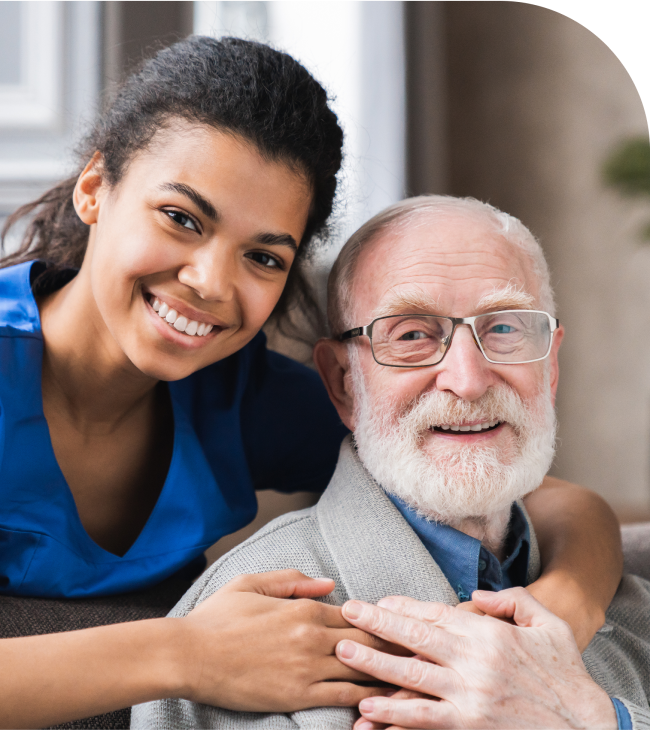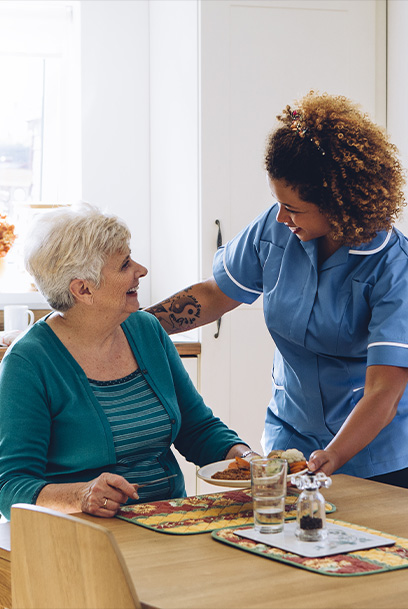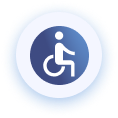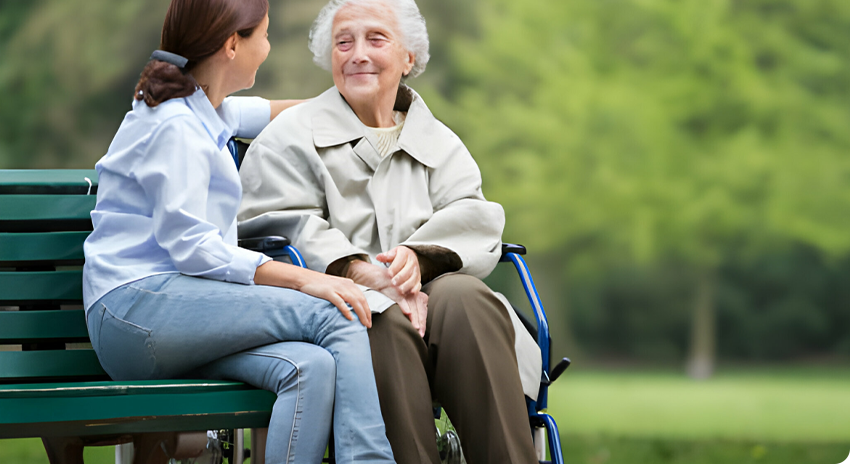Pfawnn Eskee noticed there wasn’t a dedicated space where Navajo Nation residents could find health information and resources. So she created a website that bloomed into something much bigger.
| Updated: 3:46 p.m.
This story is part of The Salt Lake Tribune’s ongoing commitment to identify solutions to Utah’s biggest challenges through the work of the Innovation Lab.
[Subscribe to our newsletter here]
While attending the Native American Conference for Behavioral Health and Mental Health in Portland, Oregon, Pfawnn Eskee, a Navajo woman, came across something she had never experienced before--a website she resonated with.
“It was all Native, by Natives and for Natives,” Eskee said with a half-grin on her face, recounting her experience at a presentation for We R Native. “It was just really cool to see a website that I could relate to.”
A lightbulb went off in Eskee’s head during the presentation. There wasn’t a central hub where Navajo Nation residents could look up information and resources pertaining to their community, but Eskee knew there was a need for one.
“I realized that it was really hard to find information about our community. It was hard to find resources,” said Eskee, recalling when she didn’t know how to enroll for food stamps after finding out she was pregnant in graduate school to become a therapist.
Turning inspiration into innovation
She carried the motivation from the conference back to Montezuma Creek, Utah, where, with the help of a 2017-2018 grant from the National Alliance of Mental Illness, she founded the website We Are Navajo under the Utah Navajo Health System.
The intention behind We Are Navajo didn’t stop at telling community members where the closest health clinic was. Eskee wanted to build a space where people could learn about the Navajo culture and contemplate complicated topics. For some Indigenous people, conversations about things like depression, anxiety and LGBTQ identity rarely occurred because, “A lot of subjects were taboo for our Native community to openly discuss and ask questions about,” said Eskee.
“In our community, from the traditional aspect, you don’t talk about those things,” Eskee said pointing to Indigenous suicide rates as an example, “because then you’re asking for bad things to be brought into your home, or into your family.”
Eskee wanted to expand the message of We Are Navajo to social media. But the NAMI grant lasted a year and only covered website maintenance, so most of the social media work was done off the clock, primarily by Eskee.
Her efforts paid off. Within a year, We Are Navajo evolved from a website to attract thousands of social media followers from all over the globe.
Specifically, the colorful content on We Are Navajo’s Facebook and Instagram pages were the main conversation starters for followers. They began reaching out to Eskee, thanking her for the encouragement to schedule a mammogram or therapy appointment.
“The comments and feedback that I got from the community kept that passion going,” said Eskee about all the unpaid hours spent on the project, “because they were so appreciative of all the information that I was providing.”
Little did Eskee know that in 2020, We Are Navajo’s online presence would skyrocket and turn into community aid work when a pandemic hit the sovereign land.
Serving the community through care packages
“COVID-19 was something that we’d never experienced before,” Eskee recounted with a sting in her voice. “We were put into lockdown on our Navajo reservation.”
The pandemic drove the Navajo Nation into isolation. According to Eskee, for a lot of Nation residents, social media was a fundamental source of constant COVID-19 information. Eskee expanded her content to reflect the frequently changing pandemic regulations enacted by Navajo Nation President Johnathan Nez.
Eskee watched her followers on Instagram jump from a few hundred to 10,000 nearly overnight. Her statistical tracking showed people from New York to Afghanistan were scrolling through and engaging with We Are Navajo content.
The unanticipated virtual traction resulted in followers requesting We Are Navajo merchandise and ways to donate to COVID-19 relief efforts back on the Nation.
“We all found ourselves in the middle of the pandemic,” said Sahar Khadjenoury, the program coordinator for the Utah Navajo Relief Program, “doing community service projects, finding ways to feed the community and [implementing] efforts to slow COVID-19 on the reservation.”
We Are Navajo partnered with the Utah Navajo COVID-19 Relief Program to donate items and distribute care packages for any Navajo Nation resident in need of one, but especially for the elderly who could not leave their homes out of concern for their safety.
“Our elders really need to be protected at all costs,” Khadjenoury said. “Our elders are so precious. They are our knowledge keepers. They are the pillars of the community. They possess so much traditional knowledge that encompasses everything from astronomy to botany.”
With the donations pouring in from social followers and elsewhere, Eskee braved public spaces to thoughtfully curate boxes when people were too scared to leave their homes, lost their jobs, or simply needed the support.
“When Eskee sent a box of leather working gloves, I was blown away,” said Khadjenoury, “because I thought, ‘That’s genius. That’s really what we needed because a lot of our elders still have to chop wood and bring it in themselves.’”
Shelly White began picking up care packages for her elderly mom when she discovered the resource on We Are Navajo’s Facebook page.
“We are Navajo had the best items,” White listed off fresh produce, cleaning supplies, and a reusable tote as an example. “We actually do use these items.”
The boxes contained not just everyday essentials, but also traditional Navajo items.
“We use blue corn, the grained kind,” said White, which is used to make blue corn mush, a popular Navajo dish, “and Juniper Ash that we use to make cornmeal with. Some of those things were in there. And those are really hard to come by.”
(Pfawnn Eskee|We Are Navajo) The creator of We Are Navajo, Pfawnn Eskee, on May 21, 2020, with a vehicle packed full of items in Cortez, Utah to create care packages for Navajo Nation residents in need during the COVID-19 pandemic.
Marissa Woody, who lived 15 miles away from Eskee’s pick-up spot, would bring back We Are Navajo care packages to members of her community.
“My two grandmas, they didn’t go anywhere during the pandemic at all,” Woody said. “So these packages really helped out with just providing the groceries that were needed.”
The layered impact of We Are Navajo
Just recently, Eskee resigned as a licensed social worker at UNHS and became a mental health specialist with the Indian Health Services in Shiprock, New Mexico. The transition meant she handed the keys to We Are Navajo over to UNHS, despite hoping to remain on the project as a contract worker.
“In the end, UNHS wanted to keep it within the company,” said Eskee. “That was probably the hardest part about leaving my job, having to leave We Are Navajo.”
Even though Eskee no longer holds creative control over the project, the fruits of her labor did not go unnoticed.
Kolenya Dempsey, the new director of We Are Navajo and current director of Iina Bihoo’aah Program, a UNHS initiative promoting a healthy transition to adulthood for Navajo youth with serious mental illness or emotional disorders, says Eskee’s passion project exceeded expectations.
“It was originally targeting mental health topics and education,” said Dempsey, referring to the early intention behind We Are Navajo, “It grew bigger than that. It highlighted our culture and heritage and showcased it for the world to see.”
As Eskee stayed up late, packing We Are Navajo apparel and branded items to ship on her own time, those on the receiving end got a visual token of their culture to share with everyone.
For Kurt Holiday, an employee at UNHS and longtime supporter of We Are Navajo, says the merchandise gave him a strong connection to his Navajo identity.
“It’s a conversation starter,” mentioned Holiday about his We Are Navajo t-shirt, “it’s also very empowering.”
Woody, the woman who brought Eskee’s care packages back to her Navajo neighbors, feels a community in the We Are Navajo apparel. “I own five shirts.”
“We are Navajo, just the word itself,” Woody contemplated, “always brings me back to the number one teaching we were always told growing up: be proud of who you are and where you come from.”
The future of We Are Navajo
We Are Navajo started as one person’s idea and bloomed into an irreplaceable resource. As the project progresses into the future, one thing remains abundantly clear from those taking over: Eskee deserves immense kudos for the launch and success of We Are Navajo.
“She does receive a lot of credit on the development,” said Dempsey when asked about how We Are Navajo will continue without Eskee.
“We are going to have to get creative on upcoming projects, on how we will create new content, and keep it up to date with the community’s needs and what’s going on nationwide,” Dempsey added.
Even though Eskee is no longer involved directly with We Are Navajo, the impact of her passion project will live on, whether that be through her newly named Instagram (@Phenomnal_Navajo), Facebook (@PhenomnalNavajo) and Twitter (@phenomenalNDN) pages, the conversations sparked in the grocery store over a We Are Navajo t-shirt, or the future plans UNHS has for the program.
“I’ll continue with the social media accounts, and hopefully continue to inspire others and empower others to have those important conversations that should be had,” Eskee said. “I’ll continue to hopefully make something great again, and hopefully We Are Navajo’s legacy will live on.”
___
Solutions in practice

 435.215.7170
435.215.7170




 Service Areas
Service Areas


